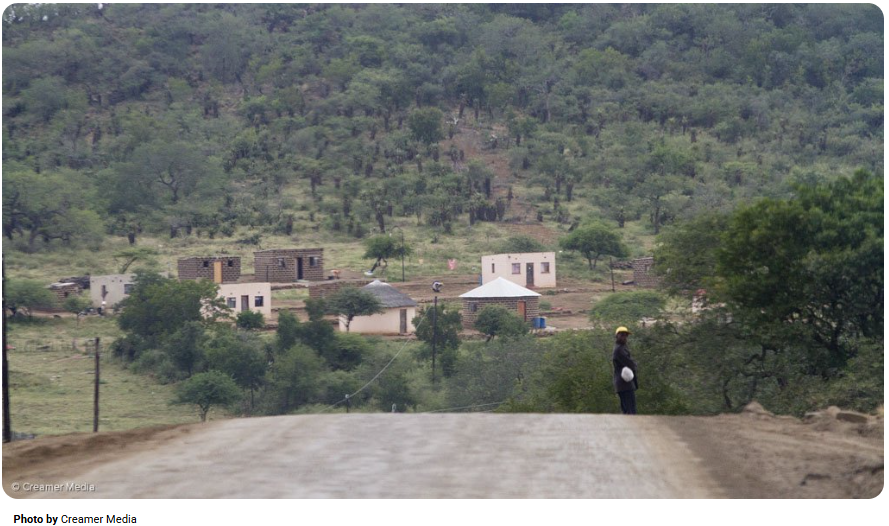
BLOG
Rural road investment - managing expectations and complexities

On the 27th of August, the Ministry of Agriculture issued a media statement commending Agbiz and Agri SA for our support in fixing rural roads. Recognition is always welcome and the political will to address the issues that is so pressing for both farmers and agribusiness alike, is a cause of excitement. That being said, roads are a complex issue so an element of realism is also required to manage expectations. In this column I will expand on some of the initiatives underway.
Road conditions are one of those items that have featured on the agenda of agricultural groupings for decades and decades. Roads are built, then through a lack of maintenance they deteriorate and it becomes an impediment to business. Same old story? Not quite. The joint initiative may still at the planning stage but the idea is certainly not to scold government about the current state of rural roads. Instead, we need to build a data-driven business case for investment into our rural logistics system.
In 2020, the Department of Public Works published a list of ‘Strategic Infrastructure Projects’ (SIPs) in the Government Gazette. SIP 26 was the Rural Roads Upgrade Programme but it has largely been dormant the past 5 years. South Africa’s road network is approximately 750 000 kms in length, of which 79% are gravel and 40 to 60% are in poor condition. Where does one start? At the national government level, there has been a real focus on key corridors such as the N1 corridor between Cape Town and Messina, the N2 between Richards’ Bay and Cape Town as well as the N4 from Gauteng to Maputo. These corridors carry the majority of South Africa’s freight and they are all managed by SANRAL. Whilst this is the logical starting point, it also implies that rural roads have not received the attention that it is due but agriculture, mining and tourism must pick up the mantle to champion these roads. After raising the issue at the political level, Infrastructure South Africa (ISA) have been tasked to resolve the matter.
This is, however, no easy feat. Agbiz and Agri SA compiled a list of roads with co-ordinates where they have fallen into disrepair. This was submitted to ISA but they do not have the final say over road maintenance and expenditure. Their task is to build a strong business case for the economic importance of each rural road with the aim of presenting this to government. A further complication is that rural roads fall under multiple bodies’ administration, including SANRAL, provincial government, municipalities and even un-proclaimed roads. The first step is therefore to identify who is responsible for each road. Thereafter, Agbiz and Agri SA members will assist to collect information on the value of goods conveyed on each road to assess the economic importance of these roads. Considering the scope of this exercise, it was decided that the Free State Province would be used as a pilot. The final aim is to build a freight demand model that can showcase the flow of goods on our road, and eventually also our rail networks.
After we gather the relevant information, the million rand question (or perhaps closer to the Billion rand question!): what can be done? SANRAL receives a grant from treasury that comes from the fuel levy paid at the fuel pump by all road users. Provinces and municipalities get an equitable allocation from national government. The one thing they all have in common is that they do not have enough money to maintain all of our roads to the required standard. Most of the Strategic Infrastructure Projects are prepared as Public-Private-Partnerships. This means that government provides some funding and attracts development finance institutions or banks to invest in them. The word ‘invest’ is key as there is an expectation that they will get their money back and with water infrastructure, social housing etc. this may be true. Roads, however, is common-access infrastructure and there is no cost-recovery mechanism outside of toll roads. Without a cost-recovery mechanism, there can be no investment because there will be no returns. Hence, the best-case-scenario is to influence the allocation of state resources to focus on those roads that are pivotal for agriculture. As a final word of caution; any economic analysis will always gravitate towards the larger, paved roads. This does not provide an answer to the hundreds of thousands of kilometers of gravel roads that service the sector. It is common knowledge that farmers are agribusiness have taken to fixing these roads themselves. If this is to become the ‘new normal’, then the best scenario would be to secure some form of tax exemption to incentivize these companies to keep doing the work. In summary, it is best to keep the champaign on ice for now as there is a lot of work that still needs to be done. Be that as it, the mere fact that government entities are including business sectors part and parcel of their economic planning is a big step in the right direction.
By Agbiz CEO Theo Boshoff for Farmers Weekly.

0 COMMENTS
LEAVE A COMMENT